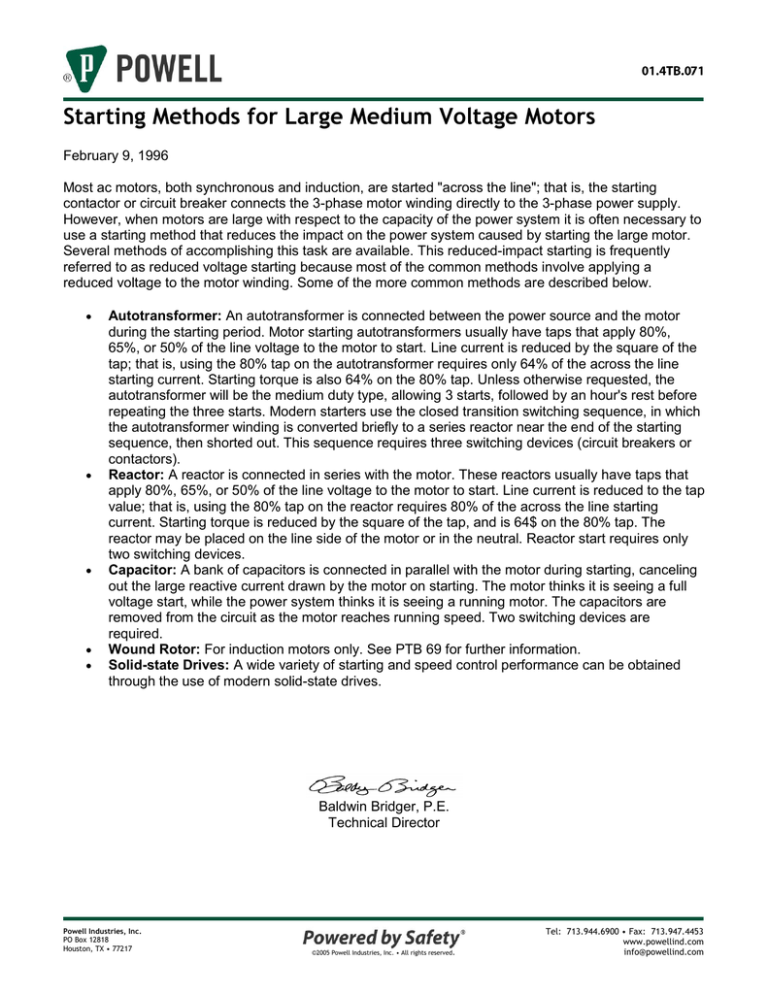
Starting Methods for Large Medium Voltage Motors
February 9, 1996
Most ac motors, both synchronous and induction, are started "across the line"; that is, the starting
contactor or circuit breaker connects the 3-phase motor winding directly to the 3-phase power supply.
However, when motors are large with respect to the capacity of the power system it is often necessary to
use a starting method that reduces the impact on the power system caused by starting the large motor.
Several methods of accomplishing this task are available. This reduced-impact starting is frequently
referred to as reduced voltage starting because most of the common methods involve applying a
reduced voltage to the motor winding. Some of the more common methods are described below.
Autotransformer: An autotransformer is connected between the power source and the motor
during the starting period. Motor starting autotransformers usually have taps that apply 80%,
65%, or 50% of the line voltage to the motor to start. Line current is reduced by the square of the
tap; that is, using the 80% tap on the autotransformer requires only 64% of the across the line
starting current. Starting torque is also 64% on the 80% tap. Unless otherwise requested, the
autotransformer will be the medium duty type, allowing 3 starts, followed by an hour's rest before
repeating the three starts. Modern starters use the closed transition switching sequence, in which
the autotransformer winding is converted briefly to a series reactor near the end of the starting
sequence, then shorted out. This sequence requires three switching devices (circuit breakers or
contactors).
Reactor: A reactor is connected in series with the motor. These reactors usually have taps that
apply 80%, 65%, or 50% of the line voltage to the motor to start. Line current is reduced to the tap
value; that is, using the 80% tap on the reactor requires 80% of the across the line starting
current. Starting torque is reduced by the square of the tap, and is 64$ on the 80% tap. The
reactor may be placed on the line side of the motor or in the neutral. Reactor start requires only
two switching devices.
Capacitor: A bank of capacitors is connected in parallel with the motor during starting, canceling
out the large reactive current drawn by the motor on starting. The motor thinks it is seeing a full
voltage start, while the power system thinks it is seeing a running motor. The capacitors are
removed from the circuit as the motor reaches running speed. Two switching devices are
required.
Wound Rotor: For induction motors only. See PTB 69 for further information.
Solid-state Drives: A wide variety of starting and speed control performance can be obtained
through the use of modern solid-state drives.
Baldwin Bridger, P.E.
Technical Director
Powell Industries, Inc.
PO Box 12818
Houston, TX • 77217
©2005 Powell Industries, Inc. • All rights reserved.
Tel: 713.944.6900 • Fax: 713.947.4453
www.powellind.com
info@powellind.com






